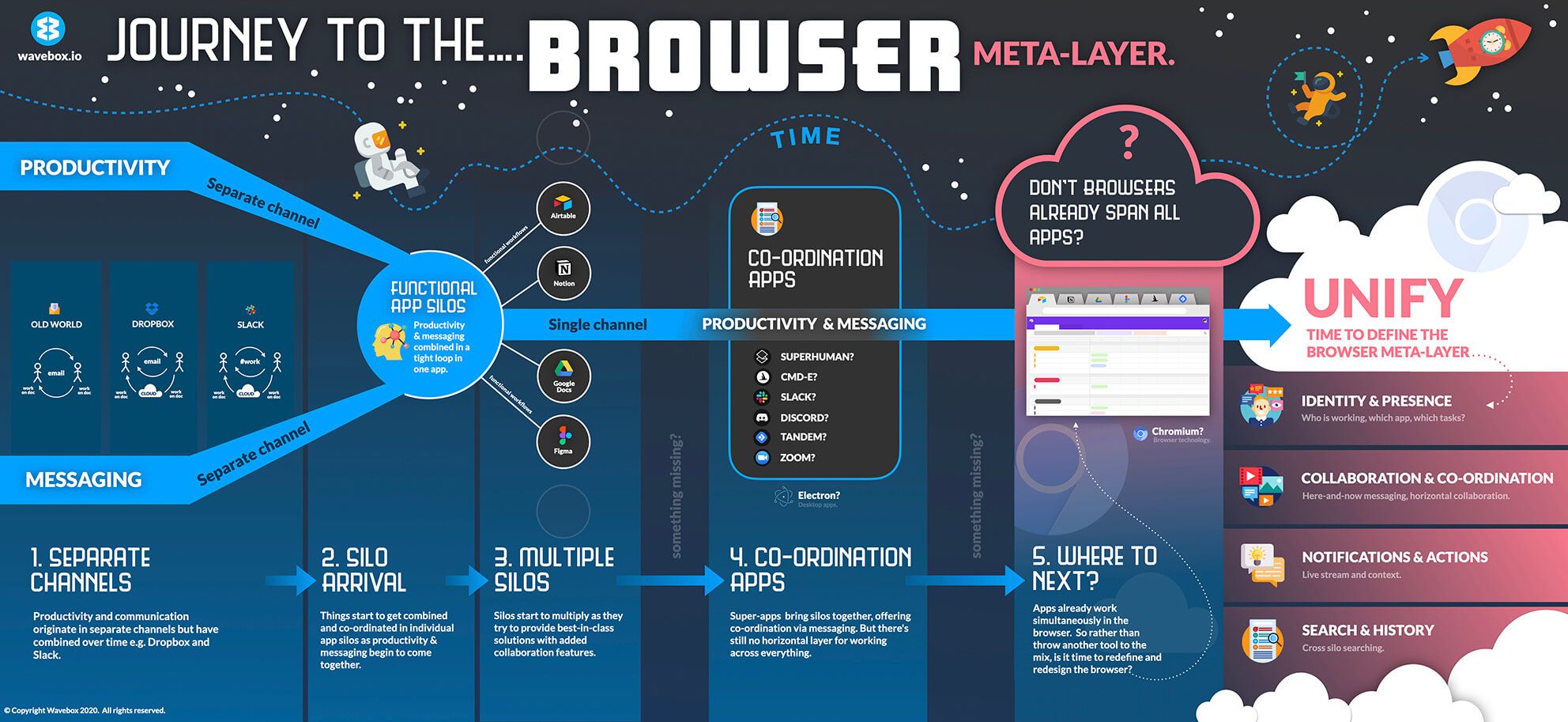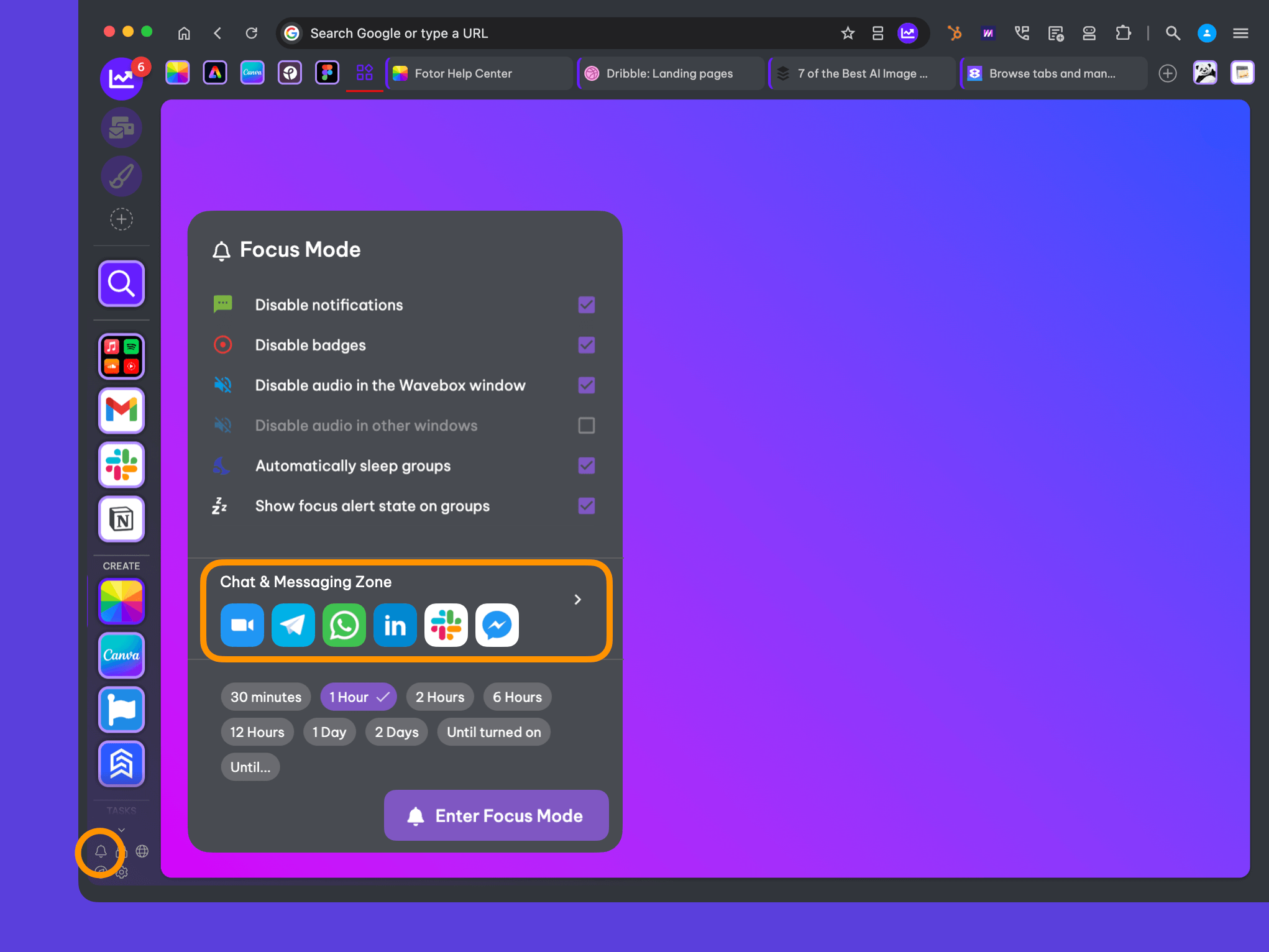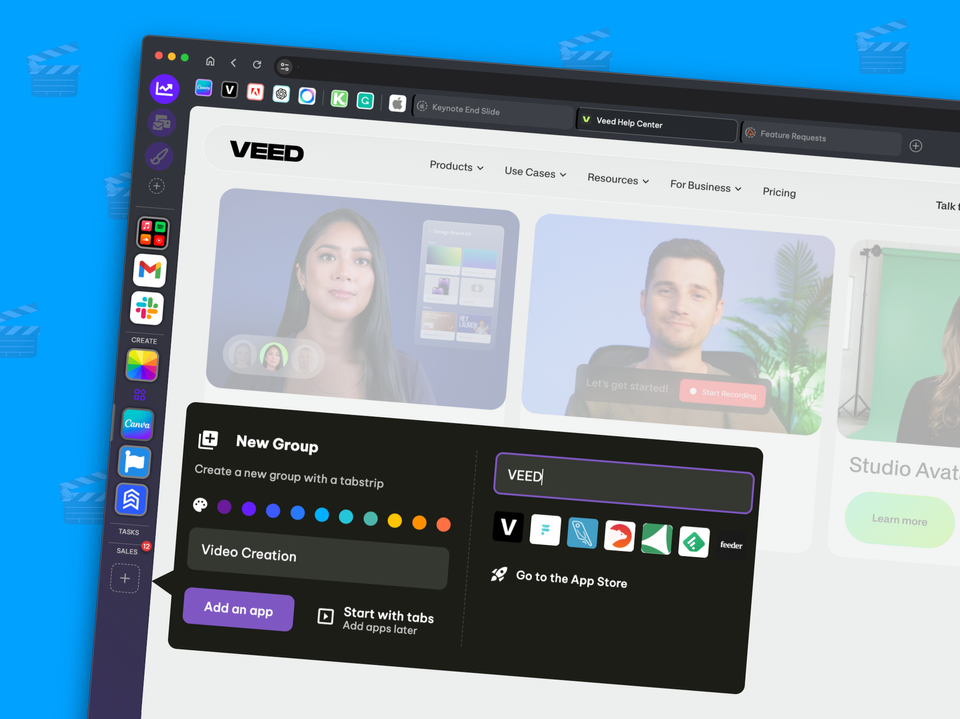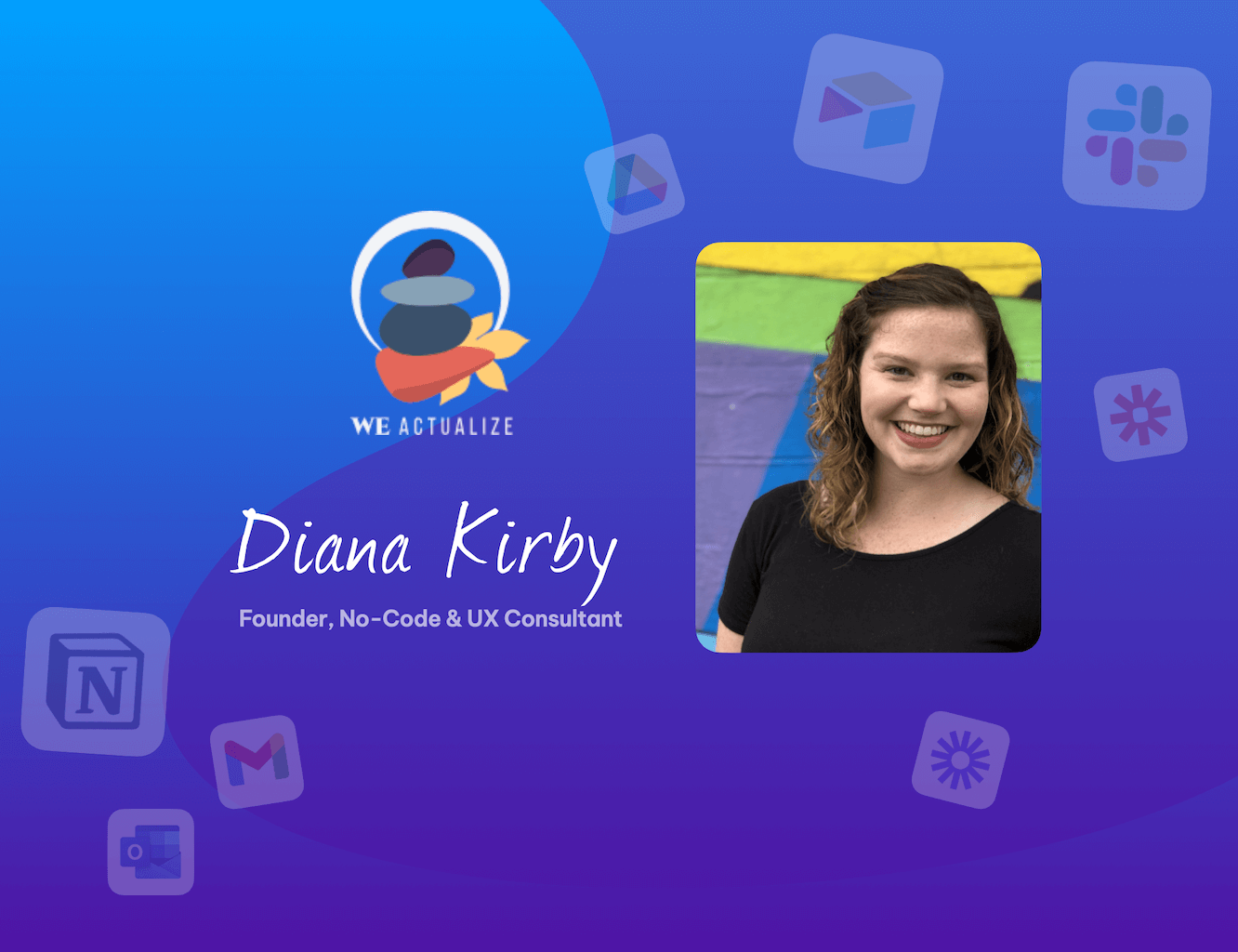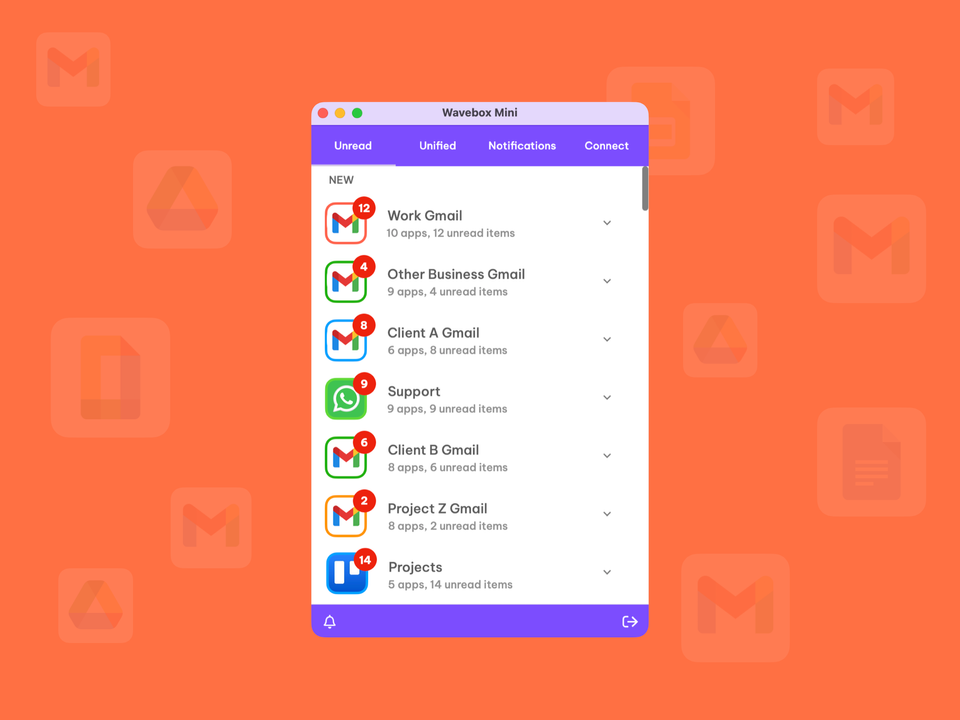Wavebox Roadmap: The Browser as a Meta-layer.
Are we discovering a new layer of productivity and collaboration? Given the thousands of web-based business tools readily available, isn't your web browser already a rudimentary meta-layer runtime?
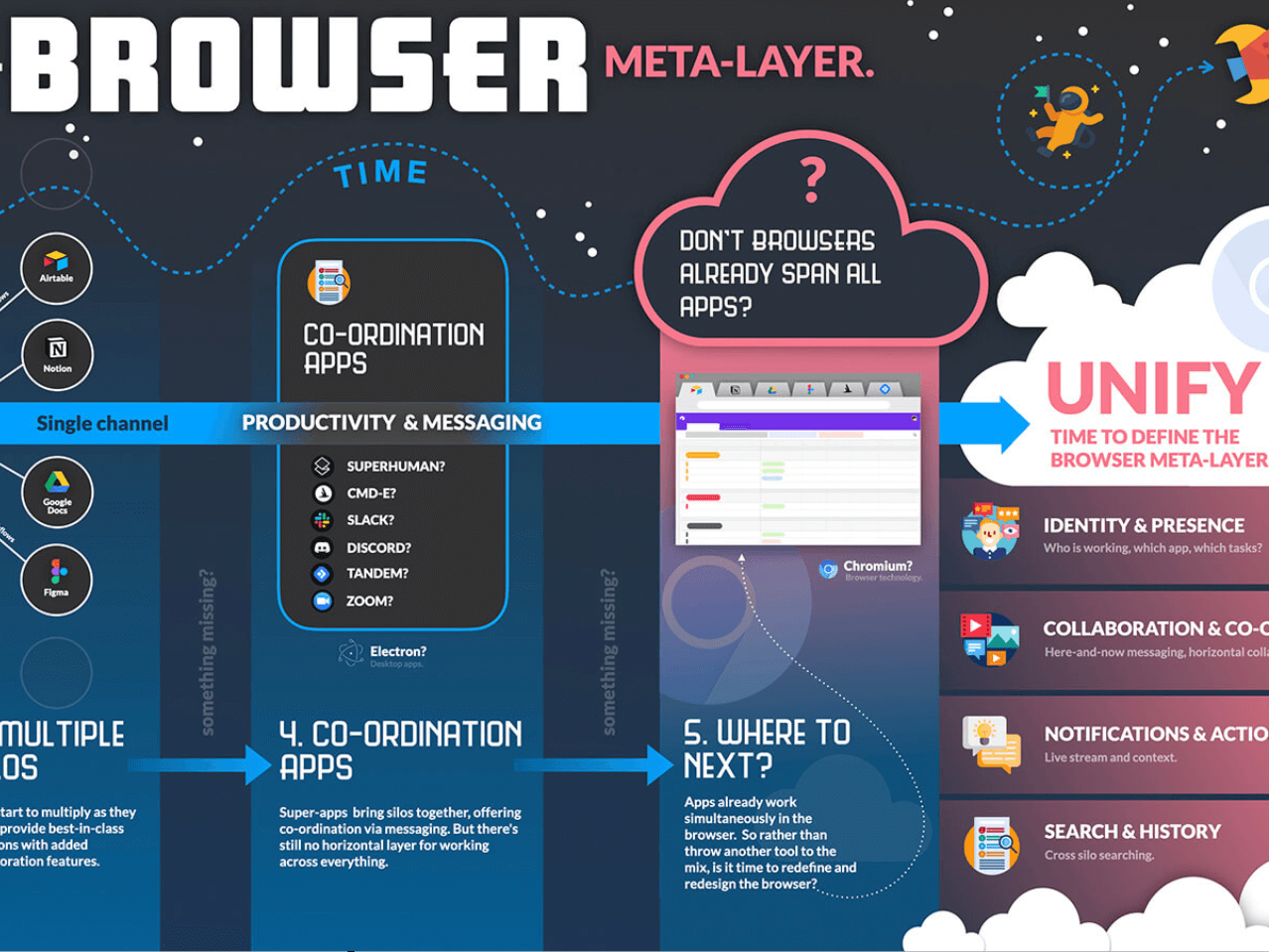
Are we discovering a new layer of productivity and collaboration?
For many of us, Covid-19 has changed the dynamics of how we work and interact with each other. The digital layer now encompasses even more of what we do, and as we use an increasing number of cloud-based applications, we spend even more of our day working and collaborating within the web browser.
Even though our web apps are in the same browser - generally in a multitude of individual tabs - there is a feeling of disjointedness between them. Why do we have to jump from tab-to-tab so much as we work? Why is so much of our time spent messaging and coordinating with other team members, so that we can get things done?
This is a question asked by two recent posts, 'The Arc of Collaboration' by Kevin Kwok and a follow-up by Julian Lehr on 'Superhuman & the Productivity Meta-Layer'. Both look at how we have managed collaboration when working digitally, and what changes the future may hold - a future that seems closer to reality now with the arrival of Covid-19.
Core to both arguments is the gap between what we're working on – the productivity part – and how we go about messaging with our colleagues – the collaboration – which has historically been disjointed and quite far apart.
Think about a typical interaction: You email a spreadsheet asking for tweaks and inputs from a couple of colleagues. A sound output leads to maybe a dozen emails, one Zoom call, and three or four versions of your spreadsheet. A bad output leads to, well, I'm exhausted just thinking about how crazy things can get when trying to track multiple versions of a document - ever-increasing emails, painful jumping from Zoom conference to Skype chat, back to Hangouts and Zoom again. Phew.
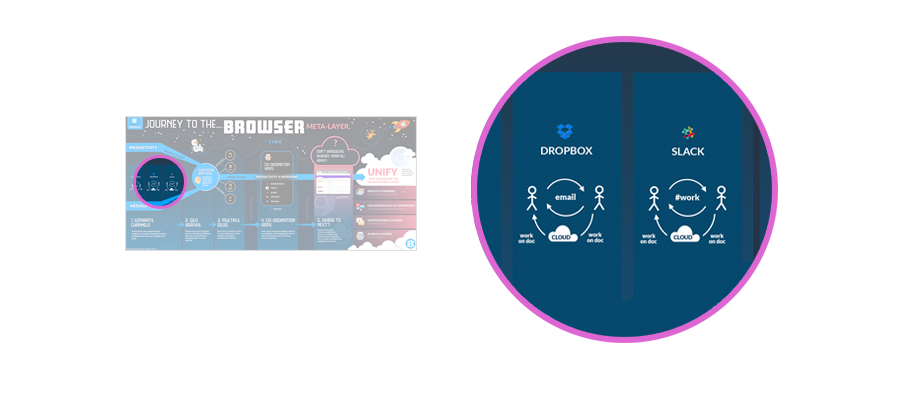
Historically, the need to improve the disjointedness of the work-message-work cycle has driven the improvements we've seen in moving to the cloud. Take two such products - Dropbox and Slack. Dropbox anchors the productivity layer in the cloud – you may have a dozen emails about the task. Still, the cloud-based Dropbox document remains a central version around which you and your colleagues work and revise. With Slack, you anchor the messaging part – all your colleagues see the context of the current and past communication in a #work channel, with links out to whatever productivity tools you're using to get things done.
However, the two channels, productivity and collaboration, are still not joined-up. So what's been happening to this trend over time?
Each new productivity tool, such as Notion, Airtable, and Figma, has addressed this by incorporating collaboration deeply into their products. As you work on data in Airtable, for example, each item's revisions and comments are all intertwined together in a single place. No jumping in and out of Slack for comments and leading to a higher level of productivity and helps keep a sense of flow, allowing things to get done without distraction or context-switching.
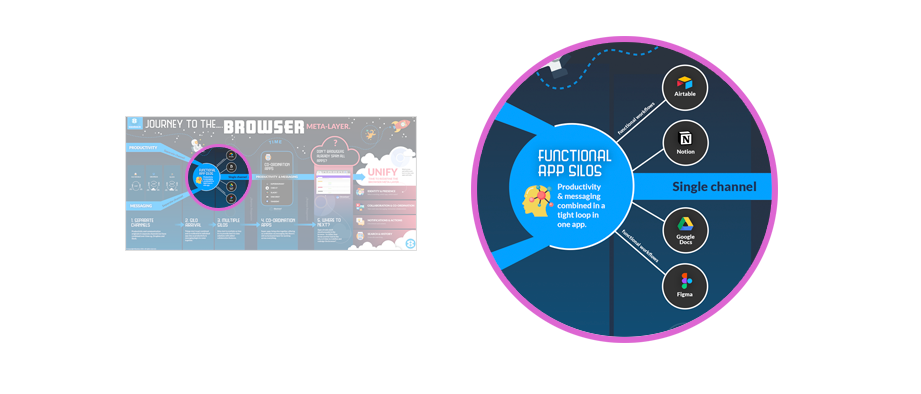
Which is great, in that you have one tightly-coupled functional app that is focused on the specific work at hand. But what happens when you need to jump from working on data to working on design in your task, for example?
Switching to Figma for design gives you the same tight work loop as Airtable did for data, but now reflect on what happens next. Let's say you get a message in Airtable referencing the task in Figma, and then a Figma colleague works and answers that separately in their Figma app. You've broken the work-message-work cycle. Each of these apps is a silo – perfect in its own way with its in-build messaging, but creating a sea of separation in between the inter-app collaborative parts. The result is a loss of context and a significant drop in productivity as you must jump from one siloed app to another.
The multiple-silo situation is where we find ourselves today. As a collaborative work tool, each is fine for its purpose – but we are forced to find an external solution to orchestrate the in-between collaboration. Many new tools are targeting this co-ordination space. In his paper, Kevin shows how Discord solves this in many ways within e-sports, and how Slack could grow to accomplish the same in work (ScreenHero being the highlighted neglected tool).
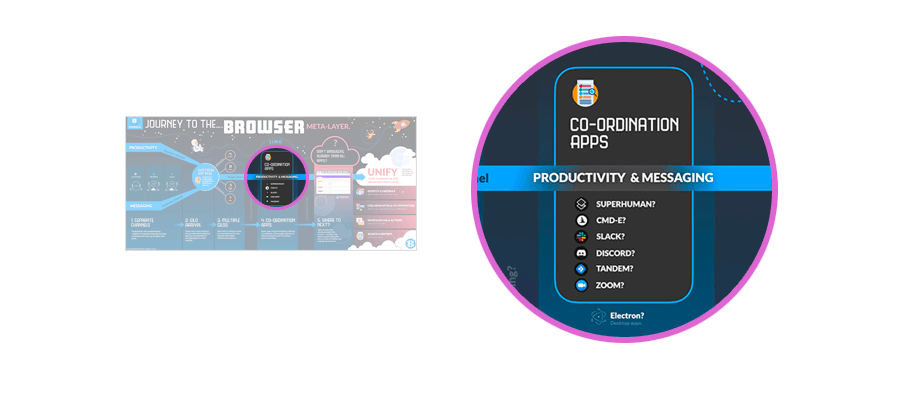
Alongside Superhuman are a few others, such as Zoom and Tandem, as discreet apps, together with a set of Electron-based clients that look to group working web apps together. But which is right? A new meta-layer prompts the search for a new solution. It can also prompt the question – which meta-tool are you already using? Could this tool grow to become the meta-layer?
Going back to our observation at the start of this post on how we spend most of our day within the same browser - could the browser itself grow to become our meta-layer runtime?
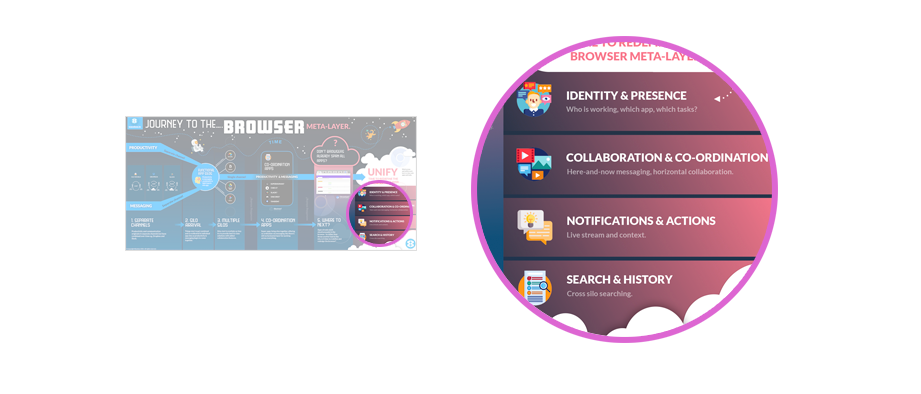
If so, what improvements are needed to fill the meta-layer needs of each app silo? Such developments would need to encompass four key areas, each of which Kevin and Julian reference in their articles and summarized as:
- Identity and presence.
- Collaboration and co-ordination.
- Notification and actions.
- Search and history.
With the latest edition of Wavebox we have worked on enhancing the browser in each of these four key areas, with the overall aim of unifying cross-app workflows and re-defining the browser's role as unifying meta-layer.
In the coming weeks, we will be introducing another new and central feature - a meta-level collaboration tool that spans everything in the browser. We believe that this crucial feature will take end-to-end workflow collaboration, without loss of context, to the next level.
So far, our journey to the browser as meta-layer has been hard and focused work - we began making the switch from Electron to a Chromium in March 2019, and since then, the momentum has been increasing. In the current climate, there is rapid change happening in the world of work - which is why we've decided to share our thoughts with you at this time. We hope reading this post gives you a better understanding of how we're guiding our roadmap development here at Wavebox, and how this will allow us all to work better together during 2020.
Please share our infographic: Journey to the Browser Meta-Layer.
